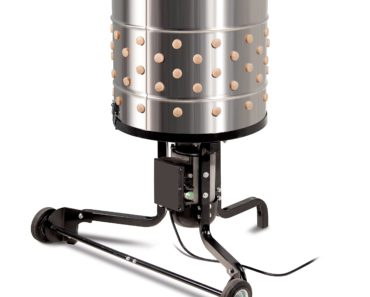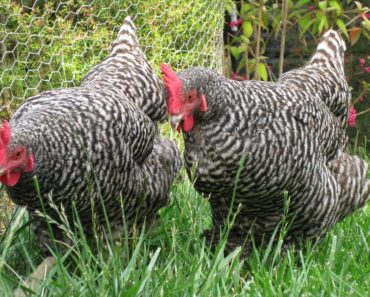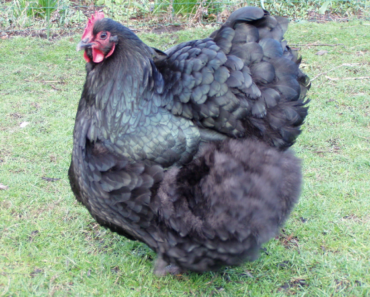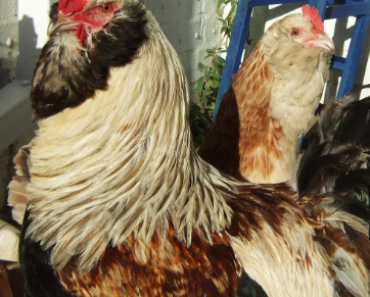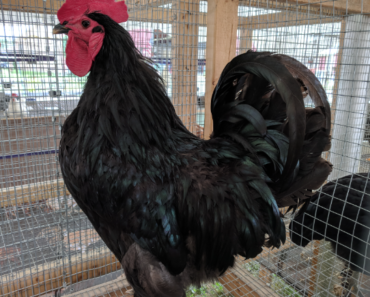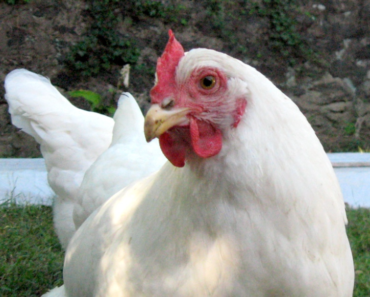Contents
- 1 The Enigmatic Easter Egger Chicken: A Colorful Delight in the World of Chickens
- 2 What is an Easter Egger Chicken?
- 3 Tips for Raising Easter Egger Chickens
- 4 The Benefits of Keeping Easter Egger Chickens
- 5 Characteristics and behavior of Easter Egger chickens
- 6 Caring for Easter Egger chickens
- 7 FAQ
- 7.1 What are the unique characteristics and attributes of Easter Egger chickens compared to other chicken breeds?
- 7.2 How can I tell if my chicken is an Easter Egger or another breed that lays colored eggs?
- 7.3 What are some tips for raising and caring for Easter Egger chickens to ensure they lead happy and healthy lives?
- 7.4 What makes Easter Egger chickens different from other chicken breeds?
- 7.5 Are Easter Egger chickens good egg layers?
- 7.6 How do you determine the color of eggs that Easter Eggers will lay?
- 7.7 Related Posts

Discover the fascinating world of Easter Egger chickens, a breed known for its colorful and unique eggs. we’ll delve into their origins, characteristics, and how to care for these delightful birds. Get ready to be amazed by their vibrant plumage and the rainbow of eggs they lay!
The Enigmatic Easter Egger Chicken: A Colorful Delight in the World of Chickens
The Easter Egger chicken is a fascinating and mysterious breed that has captured the attention of chicken enthusiasts around the world. With its vibrant plumage and unpredictable egg colors, this breed has become a favorite among both novice and experienced chicken keepers.
Easter Eggers are known for their wide range of colorful feathers. They can come in various shades of red, brown, black, and white, often with intricate patterns and highlights. Their unique appearance adds a touch of whimsy and charm to any flock.
One of the most exciting aspects of owning an Easter Egger chicken is the anticipation of discovering what color eggs they will lay. While most breeds have a set egg color, Easter Eggers are known for producing a surprise rainbow of hues. From pale blues and greens to pinks and even the occasional speckled egg, each day brings excitement and wonder to the chicken coop.
Easter Eggers are not recognized as an official breed by poultry associations, as they are considered a mixed breed or a hybrid. However, their popularity continues to rise due to their stunning appearance and egg-laying capabilities. They are typically friendly and sociable birds, making them a great addition to any backyard flock.
In terms of care, Easter Eggers require the same basic needs as any other chicken breed. They need a comfortable and safe coop, a balanced diet, access to fresh water, and regular health check-ups. With proper care and attention, these chickens can live long and happy lives.
The Easter Egger chicken is a captivating and delightful addition to the world of chickens. With their striking plumage and unpredictable egg colors, they bring joy and excitement to chicken enthusiasts everywhere. Whether you are a seasoned chicken keeper or a newbie in the world of poultry, the enigmatic Easter Egger is sure to steal your heart.
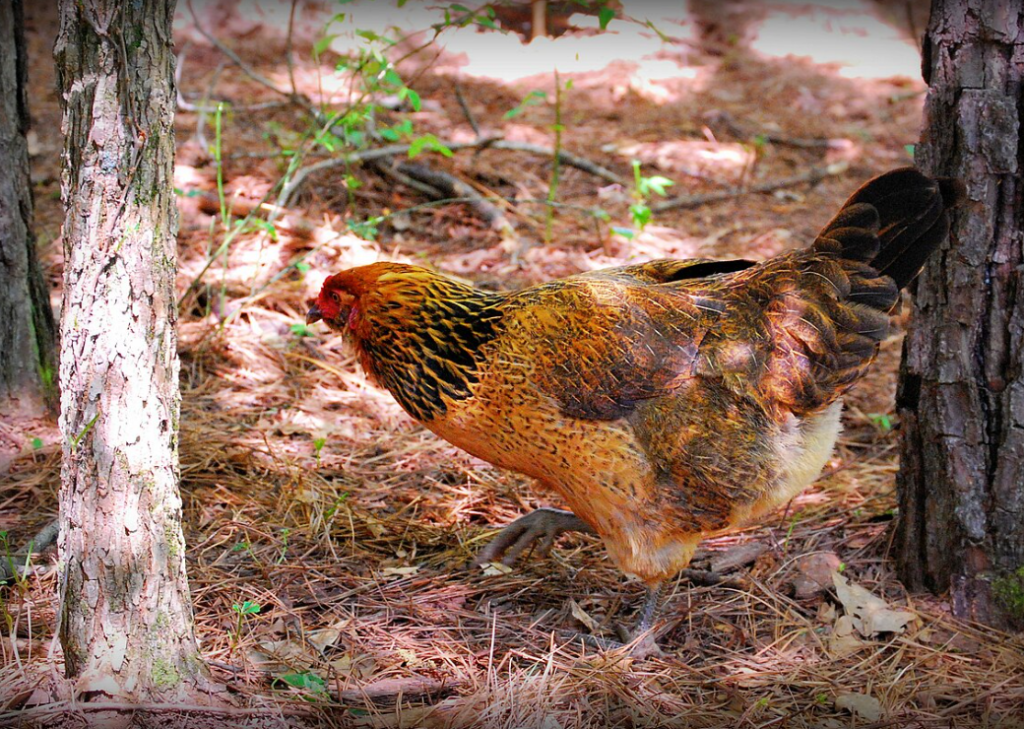
What is an Easter Egger Chicken?
An Easter Egger chicken is a type of chicken that is known for laying eggs in various shades of blue, green, or even pink. They are not a recognized breed but rather a mixed breed that carries the blue egg-laying gene from the Araucana or Ameraucana breed. These chickens are popular among backyard chicken enthusiasts due to their colorful eggs and friendly personalities.
Easter Eggers have a diverse appearance – Since they are not a standardized breed, Easter Eggers come in a wide range of colors and patterns. They can have different feather colors, comb types, and sizes. This adds to their charm and makes them unique.
They are great layers of colorful eggs – One of the main reasons people choose to raise Easter Eggers is for their beautiful eggs. While not all Easter Eggers lay blue or green eggs, most carry the blue egg-laying gene and produce eggs in varying shades of these colors. It’s always exciting to discover what color eggs your Easter Eggers will lay!
Easter Eggers are friendly and docile – Another characteristic that makes Easter Eggers popular is their friendly temperament. They are known for being easy to handle and enjoy human interaction. This makes them great choices for families with children or anyone looking for a sociable chicken that can be both a pet and a provider of colorful eggs.

Tips for Raising Easter Egger Chickens
Provide a well-balanced diet – Like any other chicken, Easter Eggers require a balanced diet to stay healthy and lay high-quality eggs. Make sure to provide them with a nutritious chicken feed that contains essential nutrients such as protein, vitamins, and minerals. Supplement their diet with fresh fruits, vegetables, and clean water.
Offer appropriate housing and space – Easter Eggers, like all chickens, need a secure and comfortable coop to live in. Provide enough space for them to move around freely, access to nesting boxes for egg-laying, and outdoor areas for scratching and pecking. Ensure proper ventilation and protection from predators.
Regular health check-ups – To ensure the well-being of your Easter Eggers, it’s important to monitor their health regularly. Check for signs of illness or injury, maintain cleanliness in their living area, and consult a veterinarian if needed. Prevention is key to keeping your chickens happy and healthy.

The Benefits of Keeping Easter Egger Chickens
Colorful eggs add excitement to your egg basket – If you enjoy having a variety of colors in your egg basket, Easter Eggers are a perfect choice. Their eggs can range from light blue to mint green, olive, and sometimes even pink. These eggs make great conversation starters and can also be used for decorative purposes.
They are great entertainers – Easter Eggers are known for being active and curious. They love exploring their surroundings, scratching the ground, and even chasing insects. Watching their playful antics can be highly entertaining and provide joy and relaxation for chicken keepers.
A friendly companion in the backyard – Easter Eggers have friendly personalities, making them great companions in the backyard. They can be easily tamed, enjoy human interaction, and some individuals may even enjoy being held or petted. Having these sociable chickens around can make your backyard a more enjoyable and vibrant place.
Characteristics and behavior of Easter Egger chickens
Easter Eggers have various physical characteristics and behavioral traits. They typically have a medium-sized body, with feather colors ranging from black, brown, red, to white. Their earlobes can be either red or white, and they have a small comb and wattles. In terms of behavior, Easter Eggers are generally friendly and sociable, making them suitable for families and for interacting with other flock members. They are known to be good foragers and enjoy free-ranging, although they can also adapt to confinement. Easter Eggers are considered excellent layers, producing approximately 200-280 eggs per year, depending on individual genetics and environmental factors.
Caring for Easter Egger chickens
To properly care for your Easter Egger chickens, it is important to provide them with a suitable living environment. This includes providing a secure coop or housing that protects them from predators and extreme weather conditions. They require a well-balanced diet consisting of a combination of commercial chicken feed and fresh fruits, vegetables, and grains. Additionally, ensuring access to clean water at all times is crucial for their overall health and egg production.
Regular health check-ups and vaccinations are essential to prevent diseases and parasites. It is also recommended to provide them with enough space for exercise and enrichment activities, such as perches or toys. Easter Eggers thrive in environments where they can exhibit their natural behaviors, so allowing them to free-range or providing them with a spacious outdoor area is beneficial.
FAQ
What are the unique characteristics and attributes of Easter Egger chickens compared to other chicken breeds?
Easter Egger chickens, also known as Ameraucanas or Araucanas, are a unique breed of chickens that are known for their colorful eggs. They have several distinctive characteristics and attributes that set them apart from other chicken breeds:
1. Varied Egg Colors: One of the most notable features of Easter Egger chickens is their ability to lay eggs in a wide range of colors. While most chickens typically lay white or brown eggs, Easter Eggers can lay eggs in shades of blue, green, pink, or even chocolate brown. This trait adds an element of variety and excitement to egg collecting.
2. Feather Coloring: Easter Egger chickens display a diverse range of feather colors and patterns. Some have solid color feathers, while others may have mottled or speckled patterns. This variability makes each bird unique and visually appealing.
3. Variable Appearance: Unlike purebred breeds, Easter Eggers do not have a standardized appearance. They can come in different sizes, shapes, and feather types, as they are not bred for specific physical traits. This diversity adds charm and character to a flock of Easter Eggers.
4. Pleasant Temperament: Easter Eggers are known for being friendly and docile, making them excellent choices for backyard flocks. They tend to be more curious and adventurous than some other breeds, which can make them fun and engaging to interact with.
5. Cold Weather Hardy: Easter Eggers are generally hardy birds that can tolerate colder climates well. Their small pea comb and low wattles help prevent frostbite, making them suitable for regions with colder winters.
6. Decent Layers: Although Easter Eggers are not recognized for their exceptional egg-laying capabilities, they still produce a respectable number of eggs. On average, they lay about 200-250 medium-sized eggs per year. Their productivity combined with the colorful egg assortment makes them a popular choice for backyard egg enthusiasts.
Easter Egger chickens are unique in their ability to lay eggs in various colors, diverse feather patterns, and variable appearance. Alongside their pleasant temperament, cold weather hardiness, and decent egg production, these characteristics make them a favored choice among chicken enthusiasts.
How can I tell if my chicken is an Easter Egger or another breed that lays colored eggs?
To determine if your chicken is an Easter Egger or another breed that lays colored eggs, there are a few characteristics you can look for:
1. Egg Color Variations: Easter Eggers typically lay a range of colored eggs, including shades of blue, green, or even pink. While other breeds can also lay colored eggs, Easter Eggers are known for producing a wider variety of hues.
2. Feather Patterns: Easter Eggers often exhibit unique feather patterns, such as muffs and beards (fluffy feathers around the face), or feathered legs. These traits are not exclusive to Easter Eggers but can be common among them.
3. Ameraucana vs. Easter Egger: Ameraucanas are a specific breed that lays blue eggs, while Easter Eggers are a mixed-breed variety that can lay various colored eggs. If your chicken has all the characteristics of an Ameraucana and consistently lays blue eggs, it is likely an Ameraucana rather than an Easter Egger.
4. Parentage and Breeder: If you obtained your chicken from a reputable breeder who specializes in Easter Eggers, they should be able to confirm the breed. However, if the chicken’s lineage is unknown or it was obtained from a mixed flock, determining the exact breed can be more challenging.
Remember, Easter Eggers are not a recognized breed by the American Poultry Association. They are a mixed breed that possesses the blue egg gene from Araucanas or Ameraucanas, crossed with other breeds. Therefore, variations among Easter Eggers are expected, and individual chickens may exhibit different characteristics.
What are some tips for raising and caring for Easter Egger chickens to ensure they lead happy and healthy lives?
Easter Egger chickens are a popular breed known for their colorful eggs. Here are some tips for raising and caring for them to ensure they lead happy and healthy lives:
1. Provide a spacious coop: Easter Eggers need enough room to roam and exercise. Aim for at least 4 square feet of coop space per chicken and a minimum of 10 square feet per bird in the outdoor run.
2. Offer a balanced diet: Feed your Easter Eggers a high-quality layer feed that provides essential nutrients like protein, calcium, and vitamins. Supplement their diet with fresh fruits, vegetables, and occasional treats.
3. Ensure access to clean water: Chickens need fresh, clean water available at all times. Use a sturdy waterer that can withstand pecking and provide enough water for their needs.
4. Provide proper bedding: Line the coop with suitable bedding materials such as straw, wood shavings, or pine pellets. Regularly clean and replace the bedding to maintain cleanliness and prevent diseases.
5. Allow for outdoor access: Easter Eggers enjoy free-ranging and foraging. Provide a secure outdoor area where they can explore, scratch the ground, and eat insects and plants.
6. Protect from predators: Secure the coop and outdoor run with sturdy fencing and wire mesh to keep out predators like raccoons, foxes, and hawks. Lock the coop at night to prevent nocturnal attacks.
7. Ensure proper ventilation: Proper airflow is crucial for maintaining a healthy coop environment. Install windows and vents to allow for fresh air circulation while preventing drafts.
8. Monitor health regularly: Check your chickens daily for signs of illness or injury. Look for abnormal behavior, changes in appetite, feather loss, or discharge. Consult a veterinarian if you notice any concerns.
9. Implement a flock hierarchy: Chickens establish a pecking order, which helps maintain order within the flock. Monitor for excessive aggression and intervene if necessary to prevent bullying.
10. Provide enrichment activities: Keep your Easter Eggers mentally stimulated by providing toys, perches, and dust bathing areas. This helps prevent boredom and reduces the risk of harmful behaviors.
What makes Easter Egger chickens different from other chicken breeds?
Easter Egger chickens are a type of chicken breed known for their colorful eggs. They are often confused with Americaunas, Araucanas, and Welsummers due to their similar egg colors. However, there are some key differences that distinguish them from other chicken breeds.
The most distinctive feature of Easter Eggers is their egg color. While most chicken breeds lay white or brown eggs, Easter Eggers can lay eggs in various shades of blue, green, or even pink. This variation in egg color is due to the genetic influence of the Araucana and Ameraucana breeds, which both have a blue egg gene.
Another notable characteristic of Easter Egger chickens is their physical appearance. They are typically medium-sized birds with mottled feathers in a variety of colors and patterns. Their feather colors can range from black, brown, buff, and red to more unique shades like lavender or splash. This makes them visually striking and popular among backyard chicken enthusiasts.
In terms of temperament, Easter Eggers are generally friendly and docile. They can adapt well to different environments and are known for being good foragers. Additionally, they tend to be good layers, although their egg production may vary.
It’s important to note that Easter Egger is not recognized as an officially recognized breed by poultry associations like the American Poultry Association (APA). Instead, it’s considered a mix or hybrid breed. This means that Easter Eggers can have a wide range of physical traits and personalities, making each individual bird unique.
Overall, Easter Egger chickens are favored for their colorful and distinctive eggs, attractive appearance, and friendly nature. They make a great addition to any flock and are a popular choice for backyard chicken keepers.
Are Easter Egger chickens good egg layers?
Easter Egger chickens are known for their ability to produce colorful eggs. They are not recognized as a standardized breed, but rather as a mixed breed that carries the blue egg-laying gene. While they may not have the consistent egg-laying performance of some purebred breeds, they can still be good egg layers. On average, Easter Eggers typically lay around 200-250 eggs per year, which is quite decent. Their eggs can range in color from blue and green to pink and light brown, making them a popular choice for those looking for a diverse egg basket. Additionally, Easter Egger chickens are generally docile and friendly, making them great additions to backyard flocks.
How do you determine the color of eggs that Easter Eggers will lay?
Easter Eggers are a breed of chicken known for their colorful eggs. The color of the eggs they lay can vary and it is determined by genetics. Easter Eggers are a mix of different breeds, including Ameraucanas and Araucanas, which are known for laying blue or green eggs.
The gene responsible for the blue or green color of the eggs is called the oocyan gene. This gene affects the pigment that is deposited on the eggshell during the formation process. The extent of pigmentation can vary, resulting in different shades of blue or green eggs.
However, it’s important to note that not all Easter Eggers will lay blue or green eggs. Some may lay brown, cream, or even pinkish eggs. This variation is due to the influence of other genes in the genetic makeup of the individual chicken.
To determine the color of eggs that an Easter Egger will lay, you need to consider the genetics of the specific bird. If the bird has Ameraucana or Araucana ancestry, there is a higher chance that it will lay blue or green eggs. However, if the bird has other breed influences, such as brown egg-laying breeds, it may produce eggs of different colors.
The color of eggs laid by Easter Eggers is determined by their genetic composition. While many Easter Eggers do lay blue or green eggs, the specific color can vary due to different genetic influences.
The Easter Egger chicken is a fascinating breed that adds both beauty and diversity to any flock. With their striking range of egg colors and unique feather patterns, they are truly a standout choice for chicken enthusiasts. Whether you’re seeking colorful eggs for your breakfast table or simply enjoy the charm of these delightful birds, the Easter Egger chicken is sure to bring joy and excitement to your poultry-keeping experience. So why not consider adding some Easter Eggers to your flock and enjoy the incredible variety they offer?

